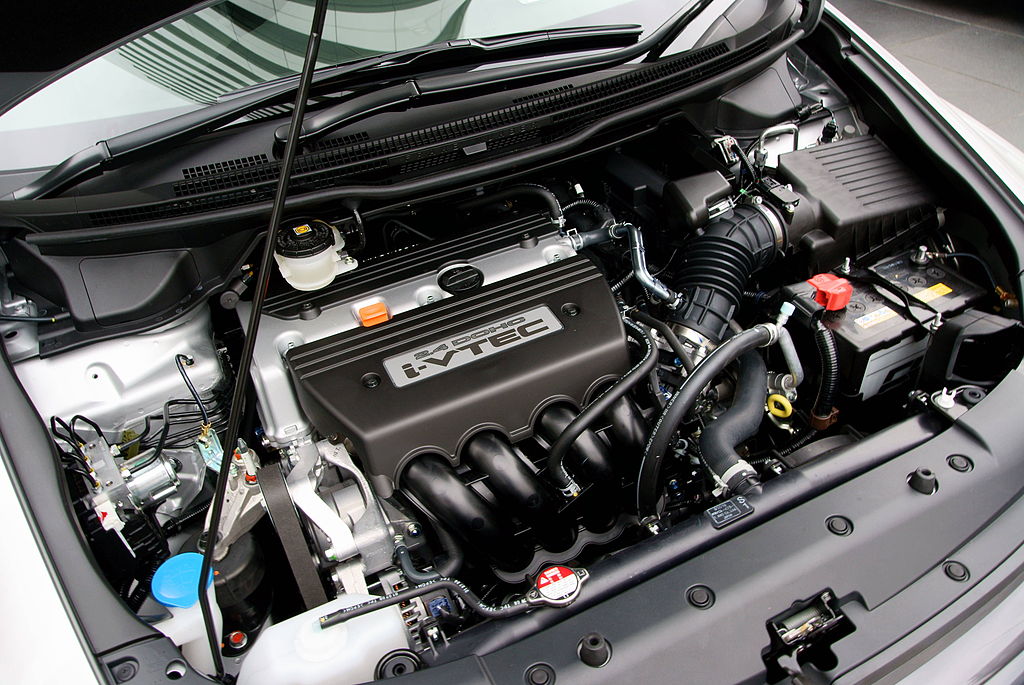
Common Honda VTEC Engine Problems: Timing Belt and Oil Issues
Key Takeaways
| Problem | Main Symptoms | Possible Causes |
|---|---|---|
| Timing Belt Failure | Ticking sounds, poor performance, no start | Belt wear, tensioner failure, water pump leakage |
| VTEC Solenoid Issues | No VTEC engagement, check engine light | Clogged screen, oil contamination, electrical failure |
| Drive Belt Wear | Squealing noises, charging problems | Age-related deterioration, pulley misalignment |
| Oil Consumption | Low oil levels, blue smoke | Valve seal wear, piston ring issues, VTEC system leaks |
| Engine Vibrations | Rough idle, vibrating cabin | Worn engine mounts, spark plug issues, timing problems |
Honda’s VTEC (Variable Valve Timing and Lift Electronic Control) technology has been a cornerstone of Honda’s engine design since the early 1990s. This innovative system allows engines to optimize performance across different RPM ranges by varying valve timing and lift. While VTEC engines are generally reliable and efficient, they do have some recurring issues that owners should be aware of, particularly as these engines accumulate mileage.
Honda VTEC Engine Specifications
| Specification | Details |
|---|---|
| Technology | Variable Valve Timing and Lift Electronic Control |
| Common Engines | B16A, B18C, K20A, K24A, F20C, J35A |
| Displacement Range | 1.6L - 3.5L |
| Configuration | SOHC/DOHC, 4-6 cylinders |
| VTEC Activation | Oil pressure operated cam profiles |
| Power Increase | 10-40% when VTEC engages |
| Fuel System | Multi-point fuel injection |
| Production Years | 1989-present |
1. Timing Belt Failure
Causes
- Normal wear and aging of timing belt material
- Water pump leakage contaminating the belt
- Tensioner bearing failure causing improper tension
- Oil leaks from camshaft seals onto the belt
- Overheating episodes causing belt deterioration
Symptoms
- Metallic ticking or squealing sounds from engine
- Engine fails to start or runs poorly
- Misfiring and rough idle conditions
- Check engine light activation
- Visible belt cracking or fraying
Solution
- Replace timing belt with OEM or quality aftermarket part
- Replace tensioner, idler pulleys, and water pump simultaneously
- Check and replace camshaft and crankshaft seals if leaking
- Ensure proper belt tension and timing alignment
- Replace coolant and check for overheating causes
DIY Difficulty / Hours
- Timing belt replacement: Difficult / 4-6 hours
- Professional service recommended for critical timing
- Cost: R2,500-R6,500 including components and labor
Interference Engine Warning
Most Honda VTEC engines are interference engines. If the timing belt breaks while running, severe engine damage including bent valves and damaged pistons can occur.
2. VTEC Solenoid Issues
Causes
- Clogged oil screen in VTEC solenoid assembly
- Oil contamination from extended service intervals
- Electrical connector corrosion or damage
- Oil pressure switch failure
- Worn solenoid gasket causing oil leaks
Symptoms
- VTEC system fails to engage at higher RPMs
- Check engine light with P1259 or P2646 codes
- Oil leaks from VTEC solenoid area
- Reduced engine performance at high RPM
- Unusual engine noises during acceleration
Solution
- Clean or replace VTEC solenoid oil screen
- Replace solenoid gasket and O-rings
- Test and replace oil pressure switch if faulty
- Clean electrical connections and check wiring
- Perform oil change with proper viscosity oil
DIY Difficulty / Hours
- VTEC solenoid service: Moderate / 2-3 hours
- Requires basic tools and VTEC system knowledge
- Cost: R450-R1,800 depending on components needed
VTEC Maintenance
Use only Honda-specified 5W-30 oil and change every 10,000 km to prevent VTEC solenoid contamination and ensure proper system operation.
3. Drive Belt Wear
Causes
- Normal aging and deterioration of belt material
- Pulley misalignment causing uneven wear
- Oil contamination from engine leaks
- Excessive heat from engine bay temperatures
- Improper tension from worn tensioner
Symptoms
- Squealing or chirping noises from engine bay
- Charging system problems (alternator belt)
- Power steering difficulties (power steering belt)
- Air conditioning compressor issues
- Visible cracking or fraying of belt
Solution
- Replace all drive belts as a set
- Inspect and align pulleys if necessary
- Check tensioner operation and replace if worn
- Clean oil contamination from pulley surfaces
- Verify proper belt routing and tension
DIY Difficulty / Hours
- Drive belt replacement: Easy to Moderate / 1-2 hours
- Most owners can perform with basic tools
- Cost: R200-R800 per belt plus labor
Belt Inspection
Check drive belts every 20,000 km for cracking, fraying, or glazing. Replace before failure to avoid being stranded with charging or cooling problems.
4. Oil Consumption
Causes
- Valve stem seal deterioration allowing oil into combustion
- Piston ring wear creating blow-by conditions
- VTEC solenoid gasket leaks
- PCV system malfunction causing pressure issues
- High-RPM operation accelerating component wear
Symptoms
- Frequent need to add oil between services
- Blue smoke from exhaust during acceleration
- Oil residue around VTEC solenoid
- Low oil pressure warnings
- Spark plug fouling from oil contamination
Solution
- Replace valve stem seals and related components
- Rebuild or replace worn piston rings
- Service VTEC solenoid and replace gaskets
- Clean and replace PCV valve and hoses
- Use high-quality oil and monitor levels regularly
DIY Difficulty / Hours
- Valve seal replacement: Very Difficult / 8-12 hours
- Piston ring replacement: Expert level / 15-25 hours
- Professional rebuild recommended for major work
- Cost: R8,500-R25,000 depending on extent of work
Oil Level Monitoring
VTEC engines can consume oil rapidly when seals fail. Check oil level weekly and top up immediately to prevent engine damage from oil starvation.
5. Engine Vibrations
Causes
- Worn or broken engine mount bushings
- Faulty spark plugs causing misfiring
- Timing belt stretch affecting valve timing
- Clogged fuel injectors causing uneven combustion
- VTEC engagement issues causing power fluctuations
Symptoms
- Excessive vibration at idle, especially in drive
- Vibration felt through steering wheel and cabin
- Rough running during VTEC transition
- Engine movement visible in engine bay
- Increased noise transmission into cabin
Solution
- Replace worn engine and transmission mounts
- Install new spark plugs and check ignition system
- Service timing belt and verify proper timing
- Clean or replace fuel injectors
- Diagnose and repair VTEC system issues
DIY Difficulty / Hours
- Engine mount replacement: Moderate / 2-4 hours
- Spark plug replacement: Easy / 1 hour
- Fuel injector service: Moderate / 3-4 hours
- Cost: R600-R4,500 depending on components
Mount Inspection
Check engine mounts annually by having someone rev the engine while you observe movement. Excessive movement indicates worn mounts needing replacement.
Preventative Maintenance Tips
Regular Service Schedule
| Service Type | Interval | Components |
|---|---|---|
| Oil Change | 10,000 km | Honda 5W-30 oil and filter |
| Timing Belt | 160,000 km | Belt, tensioner, water pump |
| Drive Belts | 80,000 km | All accessory drive belts |
| VTEC Service | 80,000 km | Solenoid cleaning and gasket |
| Spark Plugs | 160,000 km | OEM or equivalent quality |
Critical Maintenance Items
- Oil Quality: Use only Honda-approved 5W-30 oil for proper VTEC operation
- Regular Monitoring: Check oil level weekly due to potential consumption
- Timing Belt: Replace before failure to prevent catastrophic damage
- VTEC System: Clean solenoid screen during regular oil changes
- Quality Parts: Use OEM or high-quality aftermarket components
Conclusion
Honda VTEC engines represent some of the most innovative and enjoyable powerplants ever produced, offering excellent performance and efficiency when properly maintained. While they do have specific maintenance requirements and known problem areas, most issues can be prevented through regular service and attention to detail. The timing belt and VTEC solenoid are critical components that require scheduled maintenance to ensure reliable operation.
For Honda owners dealing with these engine issues, Engine Finder provides access to quality Honda engines for sale and specialized parts from trusted suppliers across South Africa.
FAQ
How often should I change oil in a Honda VTEC engine?
Change oil every 10,000 km using Honda-approved 5W-30 oil. VTEC systems require clean oil for proper operation, so don’t extend intervals.
What happens if my VTEC system fails?
If VTEC fails, the engine will still run but won’t produce full power at high RPM. You’ll notice reduced performance and may see check engine lights with VTEC-related codes.
How much does it cost to replace a Honda timing belt?
Timing belt replacement typically costs R2,500 to R6,500 including the water pump, tensioner, and labor. This is cheaper than engine rebuild after belt failure.
Can I drive without VTEC working?
Yes, you can drive safely with a non-functioning VTEC system, but performance will be reduced. Have it diagnosed and repaired promptly to restore full engine capability.
Why does my Honda VTEC engine consume oil?
Oil consumption can be caused by worn valve seals, piston rings, or VTEC solenoid gaskets. High-RPM operation can accelerate wear on these components.
How can I tell if my VTEC is engaging?
You should feel a noticeable power increase around 4,000-6,000 RPM and hear a change in engine note. Some engines have a VTEC engagement light on the dashboard.
References and Further Reading
Technical Resources
Maintenance Guides
Community Resources
Important Disclaimer
This content is for informational purposes only and is based on research from automotive industry sources. Engine Finder is not a certified automotive repair facility. Always consult with qualified automotive professionals before performing any repairs or maintenance. Improper repairs can result in personal injury, property damage, or vehicle malfunction. We assume no responsibility for actions taken based on this information.
